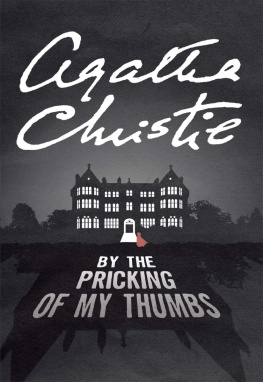Evans - The emoji code : how thumbs-ups, smiley faces and hearts shape our language
Here you can read online Evans - The emoji code : how thumbs-ups, smiley faces and hearts shape our language full text of the book (entire story) in english for free. Download pdf and epub, get meaning, cover and reviews about this ebook. year: 2017, publisher: Michael O’Mara Books Limited, genre: Home and family. Description of the work, (preface) as well as reviews are available. Best literature library LitArk.com created for fans of good reading and offers a wide selection of genres:
Romance novel
Science fiction
Adventure
Detective
Science
History
Home and family
Prose
Art
Politics
Computer
Non-fiction
Religion
Business
Children
Humor
Choose a favorite category and find really read worthwhile books. Enjoy immersion in the world of imagination, feel the emotions of the characters or learn something new for yourself, make an fascinating discovery.
- Book:The emoji code : how thumbs-ups, smiley faces and hearts shape our language
- Author:
- Publisher:Michael O’Mara Books Limited
- Genre:
- Year:2017
- Rating:3 / 5
- Favourites:Add to favourites
- Your mark:
- 60
- 1
- 2
- 3
- 4
- 5
The emoji code : how thumbs-ups, smiley faces and hearts shape our language: summary, description and annotation
We offer to read an annotation, description, summary or preface (depends on what the author of the book "The emoji code : how thumbs-ups, smiley faces and hearts shape our language" wrote himself). If you haven't found the necessary information about the book — write in the comments, we will try to find it.
Evans: author's other books
Who wrote The emoji code : how thumbs-ups, smiley faces and hearts shape our language? Find out the surname, the name of the author of the book and a list of all author's works by series.
The emoji code : how thumbs-ups, smiley faces and hearts shape our language — read online for free the complete book (whole text) full work
Below is the text of the book, divided by pages. System saving the place of the last page read, allows you to conveniently read the book "The emoji code : how thumbs-ups, smiley faces and hearts shape our language" online for free, without having to search again every time where you left off. Put a bookmark, and you can go to the page where you finished reading at any time.
Font size:
Interval:
Bookmark:
About the Author
Professor Vyvyan Evans is an internationally renowned expert on language and communication. He received his PhD in Linguistics from Georgetown University, Washington D.C., and has taught at the University of Sussex, the University of Brighton and Bangor University. He has published 14 books on language, meaning and mind, including The Language Myth: Why Language is Not an Instinct (2014) and The Crucible of Language: How Language and Mind Create Meaning (2015). Evans is a much sought-after public speaker and frequently provides expert opinion on language to the written and broadcast media. His writing has been featured in the Guardian, Newsweek, New Scientist and Psychology Today, among other publications.

First published in Great Britain in 2017 by
Michael OMara Books Limited
9 Lion Yard
Tremadoc Road
London SW4 7NQ
Copyright Vyvyan Evans 2017
All rights reserved. You may not copy, store, distribute, transmit, reproduce or otherwise make available this publication (or any part of it) in any form, or by any means (electronic, digital, optical, mechanical, photocopying, recording or otherwise), without the prior written permission of the publisher. Any person who does any unauthorized act in relation to this publication may be liable to criminal prosecution and civil claims for damages.
A CIP catalogue record for this book is available from the British Library.
ISBN: 978-1-78243-787-1 in hardback print format
ISBN: 978-1-78243-788-8 in e-book format
www.mombooks.com
Every reasonable effort has been made to acknowledge all copyright holders. Any errors or omissions that may have occurred are inadvertent, and anyone with any copyright queries is invited to write to the publisher, so that full acknowledgement may be included in subsequent editions of the work.
For Monica the love of my life.
Once in a lifetime you meet
someone who changes everything!
True loves way began with Emoji.
CONTENTS
Everything has a beginning. This storys was in January 2015. It was a Friday afternoon at the end of the month, and I was in the middle of completing a mortgage application. Keen for a distraction, I kept clicking over to my email. One such click revealed a message from a desk editor at the Guardian newspaper, in London, asking me to call. Curious to see what was up, I dialled her number.
It turned out that there was a news story breaking that no one seemed to know quite how to handle. An American teenager had just been arrested in New York for making an alleged terroristic threat against the police. But what had the journos in a tizz was this: the death threat had been made using nothing but emojis, the small colourful pictograms that, today, over 90 per cent of us use to pepper our interactions on our smartphones, and on social media. There arent many language experts that even know what an emoji is. Can you write something that makes sense of this? the desk editor asked. Intrigued, I set aside the mortgage documents. Let me think about it, I replied. I need something this afternoon, she countered, apologetically. Hmm OK, I said. And while I didnt know it at the time, with those few words, an entirely new research project that would run for years and a new linguistic science of text-based digital communication was born.
I spent the rest of the afternoon reflecting on the phenomenon of Emoji. I thought about the emojis I used, safe in my comfort zone, the boring ones: the wink, smile and, sometimes, a sad face. Before then, Id never thought much about whether there were other emojis, or even where they came from. I tried to recall when I had first become aware of them. I struggled. One day they just seemed to be there, all at once, as if they had been dropped out of the sky and into our smartphones. Today emojis really do seem to be everywhere. But back in early 2015, people were just starting to use them in numbers. And I had to admit it, I didnt have a clue what some of them were supposed to convey. For instance, what did that one of the dancing twin girls with bunny ears mean?
As I began to investigate, I quickly discovered that emojis were a very recent phenomenon. It was only in 2011 that they were introduced as standard on the Apple electronic keyboard, on iPhones and iPads. They became available as standard with Windows 8 in 2012, but didnt receive full functionality across all internet browsers until Windows 10 in 2015. And on Android operating systems, which are used by the worlds biggest-selling smartphone manufacturer, Samsung, they were not standard until 2013. But 2015 seemed to be the year that Emoji made the leap from some bizarre, little-known adolescent joke, to a bona fide means of communicating with our nearest and dearest, expressing something more than what could be achieved with digital text alone. By the end of 2015, Emoji even received institutional respectability of sorts being endorsed by Oxford University Press: an emoji, no less, was named as Oxford Dictionaries Word of the Year. Emoji could no longer be pigeon-holed as an amusing irrelevance, a passing fad; Emoji had gone mainstream!
I wrote my article, Can emojis be used to make terror threats?, and sent it through to the Guardian, which published it a few days later. And that was that. For the next couple of months I thought no more about it. I taught at the university, travelled to give international lectures, began work on a different book (and I completed my mortgage application, and moved house).
But the story resumed in April 2015. And this time, it wouldnt let me go. I was contacted by the London-based telecommunications company TalkTalk. Their mobile-phone division wanted to commission some research for a prospective PR campaign. They were interested in figuring out how widely Emoji was used by the UKs smartphone users, and, perhaps more importantly, how people use it, and why. Today reports on Emoji usage are everywhere; marketing companies, app developers and multinationals invest thousands and even millions in studying usage patterns. But in early 2015, little was known about these matters TalkTalk confessed to having struggled to find an expert who could help them. My article from two months earlier had sent them my way. And so I helped design a questionnaire on usage patterns that was then used by a market research company, which polled 2,000 representative adults. I analysed the results, and in doing so, produced the worlds first study into individual Emoji usage patterns. And from there, as the findings accumulated, the questions mushroomed in equal measure. The only solution to make sense of it all, I realised, was to set aside the book I was working on and write this one instead.
The rapid adoption of Emoji, in just a few years, makes it a rich (and well-recorded) case through which to explore the nature of human communication, including the nature and functions of language and other non-verbal aspects of communication. In the chapters that follow, I discuss a wide range of issues in the context of digital communication, and how these new communicative possibilities are changing the way we interact with our digital friends and followers, many of whom we have never met. In our investigation into the world of Emoji, well explore the nature of communication, how grammar works, the evolutionary origins of language, the social and cultural factors that govern language use, language change and its development, as well as the nature and organisation of language, what it reveals about the nature of the human mind, and how meaning arises when we communicate. As well see, far from being some passing fad, Emoji reflects, and thereby reveals, fundamental elements of communication; and in turn, this all shines a light on what it means to be human. Surprising as it may sound for the uninitiated, theres far more to Emoji than you might think!
Next pageFont size:
Interval:
Bookmark:
Similar books «The emoji code : how thumbs-ups, smiley faces and hearts shape our language»
Look at similar books to The emoji code : how thumbs-ups, smiley faces and hearts shape our language. We have selected literature similar in name and meaning in the hope of providing readers with more options to find new, interesting, not yet read works.
Discussion, reviews of the book The emoji code : how thumbs-ups, smiley faces and hearts shape our language and just readers' own opinions. Leave your comments, write what you think about the work, its meaning or the main characters. Specify what exactly you liked and what you didn't like, and why you think so.

















